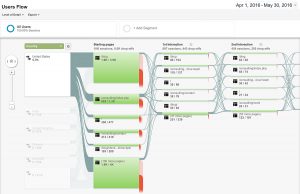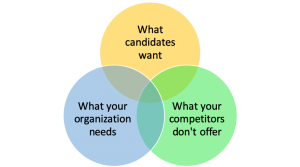Hey you! Yes, you. Where’s your mobile device? For about 2 billion people worldwide, the answer is “not very far from my reach.” We find them useful to fulfill job responsibilities and stay connected in our personal lives. Even 43% of job seekers use their mobile device to research opportunities, while 21% prefer to apply for jobs the same way.
Knowing the pervasive adoption of mobile  devices worldwide, you would think CHROs are jumping on the opportunity to make their processes – at a minimum, recruiting, hiring, and onboarding – mobile-enabled. Surprisingly, this is not the case. According to a 2015 study conducted by Bersin by Deloitte, more than 50% of HR professionals have no intention of adopting mobile apps for themselves, their managers, or their employees.
devices worldwide, you would think CHROs are jumping on the opportunity to make their processes – at a minimum, recruiting, hiring, and onboarding – mobile-enabled. Surprisingly, this is not the case. According to a 2015 study conducted by Bersin by Deloitte, more than 50% of HR professionals have no intention of adopting mobile apps for themselves, their managers, or their employees.
HR processes not mobile-enabled? Here are 4 reasons why you’re missing out
Two years ago, the buzz in the HR world centered on the desire to use mobile technology to support recruiting and application tracking. Now, HR professionals know that there’s value in mobile technology, but are still reluctant to move forward.
In the Bersin by Deloitte study, participants cited perceived benefits such as increased workforce productivity (60%), faster response times (59%), improved real-time decision making (53%), higher employee engagement (52%), 33% enhanced employee satisfaction, and better resolution of internal employee issues (26%). But that’s not all that HR organizations are passing up.
According to recent McKinsey research, there are four critical capabilities that can help win the war for talent:
1. Match the best people to the right job
Between 30% and 45% of the global working-age population are unemployed. Yet, one-third of businesses worldwide cannot fill open positions with highly qualified talent. See the opportunity?
That’s the beauty of using an online, including mobile-enabled, talent platform. For businesses in the United States, United Kingdom, Germany, Japan, India, Brazil, and China, that means access to 850 million potential candidates that they couldn’t otherwise access. By connecting companies with potential candidates with hard-to-find skills, online talent platforms serve as a clearinghouse that can inject new momentum into the labor market.
McKinsey predicts that online platforms will yield a $ 2.7 trillion (2%) growth in global GDP by 2025, thanks to faster and more accurate matching, more formal process, and boosting the participation of inactive job candidates. More important, the use of this technology will bring about a rise in the employment rate by 72 million full-time–equivalent positions.
2. Hire and manage talent – from recruiting to onboarding and retention
Even if candidates have the right skills and experience on paper, employers still need to make sure that they will fit into the company culture. Otherwise, what’s the point of hiring them? Platforms that incorporate Big Data analytics can spot trends and patterns whether candidates can assimilate themselves in the workplace, perform well, and stay.
Once new employees are hired, HR needs to shift gears and focus on retention from day one. High attrition rates are very expensive to the business. Online talent platforms help mitigate that risk, driving down recruiting costs by boosting engagement and alerting managers when to intervene before low morale, dissatisfaction, and boredom sets in.
3. Prepare the future workforce with the right skill sets
Within the next five years, recruiters and hiring managers will face a shortage of approximately 40 million of workers with college/postgraduate degrees. To plan for the future of work, HR must help up-and-coming talent pursue an education that complements the future needs of the entire business.
By increasing transparency on skill demand, government organizations and educational institutions can gather data to produce insight into specific skills and occupation that are – and will be – in demand. This information will guide students’ as they choose a college or university and select a degree program that matches their interests and strengths and the need for a particular set of skills.
It’s true that shifting the skill mix of the labor market over the long term takes time. However, steady movement towards an equal balance between supply and demand will gradually improve the quality of human capital and economic vitality.
4. Improve overall business performance
Last, but certainly not least, use of an online talent platform is good for your business’ bottom line, too. Simply put, attracting higher-performing employees and further developing that talent improves business outcomes.
Companies that integrate this technology strategically can enhance productivity, agility, and employee engagement – securing a significant and lasting advantage when competing in an increasingly digital economy. And as McKinsey found, a company’s output can increase as high as 9% and lower costs related to talent and HR activities by as much as 7%.
For more top hiring strategies, see 4 Ways to Take Advantage of the Talent Ecosystem.
(107)








